I am almost embarrassed to ask this, but before I potentially shell out about £100 for a new VCR I want to just confirm:
I have done a search about VHS capture how to improve quality of my VCDs and DVD-Rs. What stood out is that it is clear that using the Composite connections to my ADVC-50 causes chroma distortion on captured films (from commercial and home recorded VHS). If one has an S-VHS VCR then the output would be much better without as much of this distortion.
However, to my (poor) knowledge S-VHS VCRs are not available in the UK (Dixon's for example doesn't sell VCRs at all anymore).
Therefore is getting a VCR with S-Video output (to attach to the S-Video input on my ADVC-50) really worth getting to improve capture quality or is the gain in quality insignificant and not worth the cost of the VCR.
Thanks for any advice.
+ Reply to Thread
Results 1 to 28 of 28
-
Cole
-
I see only a slight difference between video captured from RCA or S-Video on the same VCR. The S-Video produces a slightly sharper image. Overall though using a good VCR will improve captures. S-video usually only comes on better VCR's.....Originally Posted by Cole
-
Thanks, that is useful. What you are saying is that the only way to get better capture overall from non S-VHS VCRs is down to the quality of the VCR itself but not necessarily the output connection.
That makes alot of sense. I am using a Panasonic NV-HD90 which is pushing ten years old now. I stuck with this one as it doesn't have on screen graphics (triangles in the corner when pressing play, square for stop etc). I have a newer Panasonic NV-HV61 (but no S-Video output).
Maybe worth an experiment to see what delivers the better picture.Cole -
Dixons may not sell them any more but plenty of places do. JVC are well known for making S-VHS VCRs which output S-Video. Have a look at http://www.empiredirect.co.uk/content/products/details/html/JVC-HRS5975.htm. If you don't like the idea of ordering over the net, you will probably be able to get one from Comet, Miller Brothers, John Lewis or maybe even Argos.
-
I don't know anything about those specific models but just beacuse they are old doesn't make them bad. Some specific models of older VCR's are sought after. Have you tried cleaning them? That's a little bit out of my realm but I would think it might be a good idea to give it a try.
Those on screen graphics can usually be turned off on the VCR menu.Originally Posted by Cole -
That's my experience too, The quality of the playback VCR is the most important factor. The difference between S-Video or composite output is marginal, specially if you are using normal VHS tapes. I compared the s-video and composite signal from my SVHS JVC with a good tuner signal through my TV-card and DV-passthrough. Really the difference is not that noticeable. More important is to have a clean and stable signal.Originally Posted by Cole
I have 2 SVHS machines here (not high end) but for my VHS transfers I still prefer my normal VHS. It just gives me a nicer picture.
Better just try first how your normal VHS machine performs before buying a new one! -
Just found this from Lordsmurf:
From this thread: https://www.videohelp.com/forum/viewtopic.php?t=247084&highlight=vhsAn S-VHS VCR, a good one, will at least clean up the chroma mess made on ALL VHS tapes. That's the only real draw to the machine, improving the image quality.
But even then, use composite, not s-video.
Got to admit that alot of the stuff on the linked page went over my head as there is still alot of conflicting opinion.
@Richard G. Found the JVC HRS5965 in the Argos catalogue, so thanks for the pointer.
@ The Doman. I will still experiment with what I have currently got and will post back my results (though it will be a day or two).
@ The Coalman.
Haven't been able to do this so far, but I will have a hunt for that.hose on screen graphics can usually be turned off on the VCR menu.Cole -
I have done my experimentation.
Below are three screen shots all sourced from a fifteen year old commercial VHS tape. Many of my VHS to VCD/DVD have been of a similar age and quality.
The signal connection to the ADVC-50 were all taken via Composite connections.
The first one below is taken from my (aprox.) ten year old Panasonic NV-HD90. I have been using this for all of my VHS conversions so far.
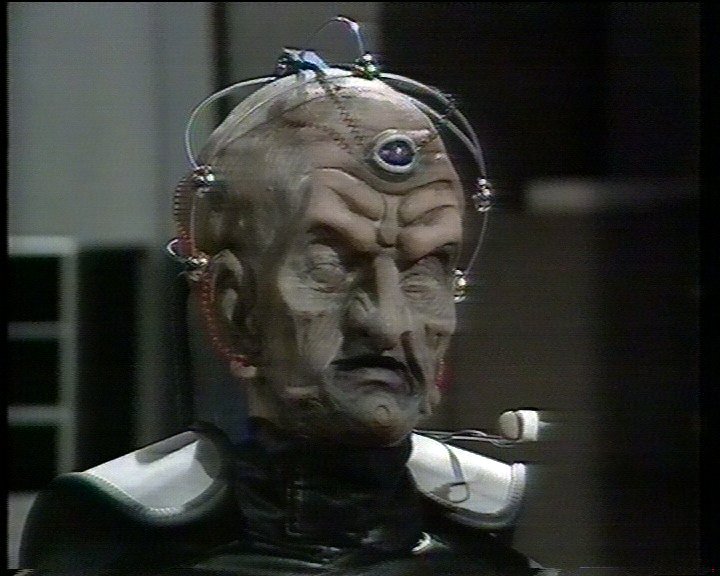
The second is from my newer Panasonic NV-HV61.
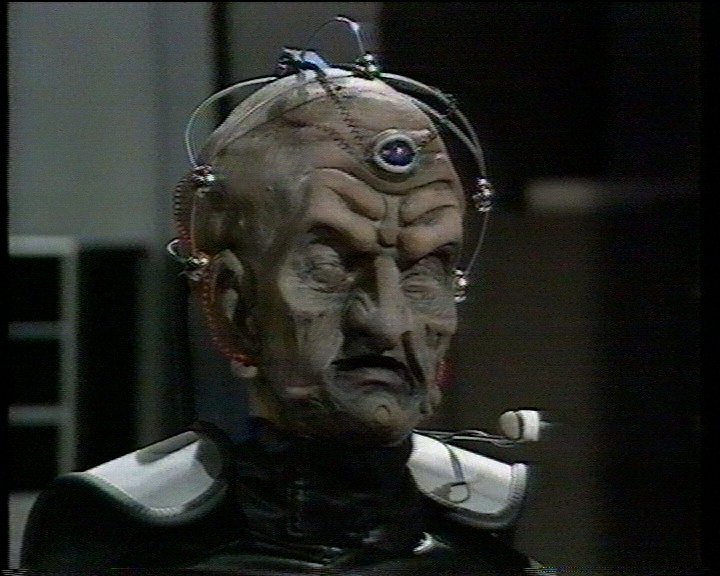
From the two above, I find that the older VCR is giving a slightly clearer picture, but the colours are a bit washed out.
The newer VCR has the colour but is showing up too many artifacts, thus the picture is a bit grainy.
So...
... I took a bit of a chance and went and bought a JVC S-VHS HR-S5967 and recorded the same clip.
This is the comparison screen cap:
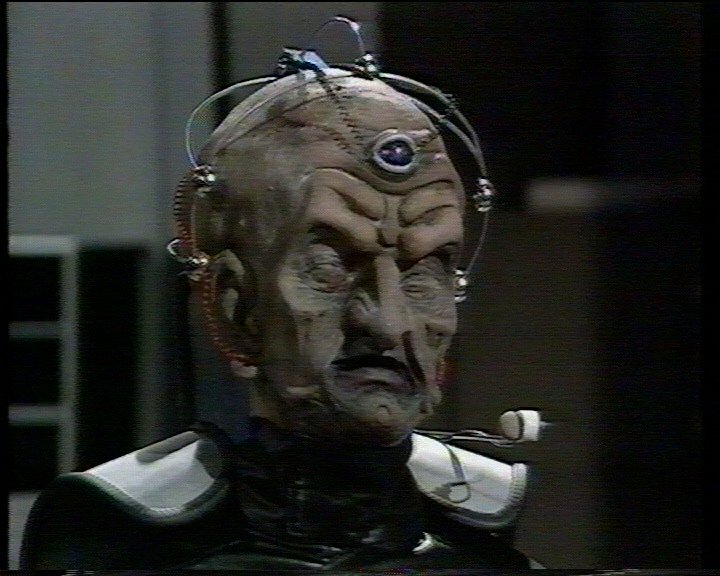
I feel that this a little better defined/not as grainy (see the white squares to the left of the picture) than the second and that the colour is not as washed out as the first (the third definitly looks the better when the three are laid side by side).
Any comments on the above would be welcome. Cole
Cole -
Well the second one is definiley the worst of the lot. Appears to me the first is the best but it's hard without doing a side by side comparison.
-
I went with your first pic -->

In order of rank..
1st - Because, in the end, it held the detail better.
3rd - slight better brightness, more detail (noise) but suffered same
....... w/ detail and distortion.. otherwise, if your "color" is your
....... only disatisfaction, then I would go with this one.
2nd - worse. Too noisy and bad detail/distortion.
I made this conclusion based on my own tool for disecting video/pics.
I widdle tool I cooked up a couple of years ago for just this sort of
stuff. Anyways.
My vote was for your first pic :P
-vhelp 3070 -
If you wanted to buy an S-VHS machine, should have gotten
one with DNR/TBC. Those flaws would no longer exist.Want my help? Ask here! (not via PM!)
FAQs: Best Blank Discs • Best TBCs • Best VCRs for capture • Restore VHS -
My vote is also for VCR #1. Even on #2 you can see slightly more detail (check the face - left chick - on the JVC you can't almost see the detail of the upper wrinkle).
lordsmurf, first thank you for the grate guides you are putting up - really well done.
As I'm not in US, can you advise on externall TBC corrector different from what you list as your recomendation.
I'm in Japan and here there are many devices mainly refered as video corrector (cost about 150USD).
I want to do something like Cole but as I already have 2-3 VCRs don't want to buy new S-VHS with integrated TBC.
Is it enough to connect TBC device after the VCR and output to the capture card? -
If you were reading the thread we were doing a couple of months back, the arguement was whether commercially produced VHS or VHS-C camcorder tapes had enough luminance bandwith to make the S-video connector worthwhile.
This mainly applied to the NTSC system where the 3.58MHz subcarrier (and its sidebands) sit very close to the theoretical perfect 3MHz luminance low pass filter. What we seemed to conclude was that since even the best home recorders low passed luminance considerably below 3MHz, tests showed little difference in cross color distortion using the composite vs. S-Video output for home recorded VHS material. Commercial VHS and VHS-C camcorder tapes were not tested.
For SVHS material which has luminance up to >4MHz, one would expect a signifiant advantage to S-Video connections.
For the PAL system, the VHS issue is much less of a problem since the color subcarrier sits well above luminance at 4.43MHz. -
An external will not do what I am referring to. In Europe, the PAL JVC HR-S7965 and S8965 are great units.
Want my help? Ask here! (not via PM!)
FAQs: Best Blank Discs • Best TBCs • Best VCRs for capture • Restore VHS -
So lordsmurf, are you saying that if for example he use the VCR#1 and external TBC+noise filter there will be no improvement?
What is better if the TBC is integrated in the VCR? -
Thanks for the feedback everyone. After reading this, I decided that the perceived gain in quality was not worth the cost and I have received a full refund on the item ("if not completely satisfied etc..."). Bottom line is, if I want to shell out £100 plus, then I really want to get a distinct improvement of the image rather than 'only better on bits' improvement.
Now, between the two shots that were left, the old Panasonic is definitly the better picture I think we all agreed, but I have seen some screen shots on these board before which have been very clean indeed. I was going to ask which machines would be recommended, but...
... so that answered that one. I am still interested in getting as good a VHS picture quality as I possibly can, so the JVC models mentioned by Lordsmurf will be something that I will investigate.Originally Posted by lordsmurf
I take it that this is what is being refferred to (from S8965 instructions).Originally Posted by Lordsmurf
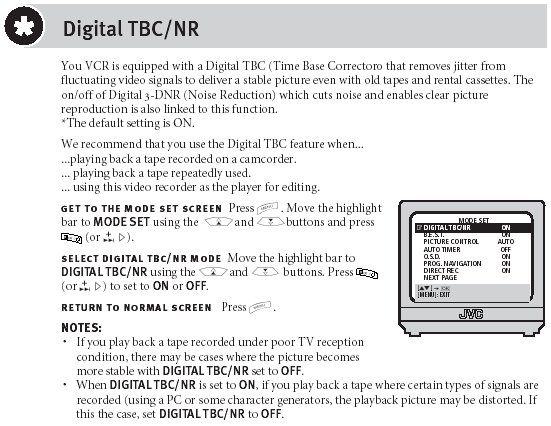
All the JVC models quoted what was referred to as B.E.S.T system, which in my error thought was the JVC jargon for a TBC


Vhelp, I think that what I was referring to was a sharpness of the third picuture too, but on closer inspection, the first did have a better definition and detail. The colour wash out however, tended to 'dampen' the image to my eyes.Originally Posted by vhelp
I did see this post but in all honesty after having spent an hour looking at posts from a search with "VHS" there was a tendancy to skim read the longer posts and I did not pick up on this. However, I did see the very clean screen shots taken from "Titanic". I don't suppose for one moment I would get relults like that from a fifteen year old BBC TV release, but something approaching this would be nice.Originally Posted by edv
Thanks again for all your help; the S8965 may be my next stop.
Edit: upon further investigation the S8965 may be a bit over the top for my needs, so the S7965 may be the one I may go for.Cole -
I have now managed to track down a JVC HR-S7965 VCR and just wanted to show the quality of the picture playback using the DNR/TBC (again through the Composite connection).
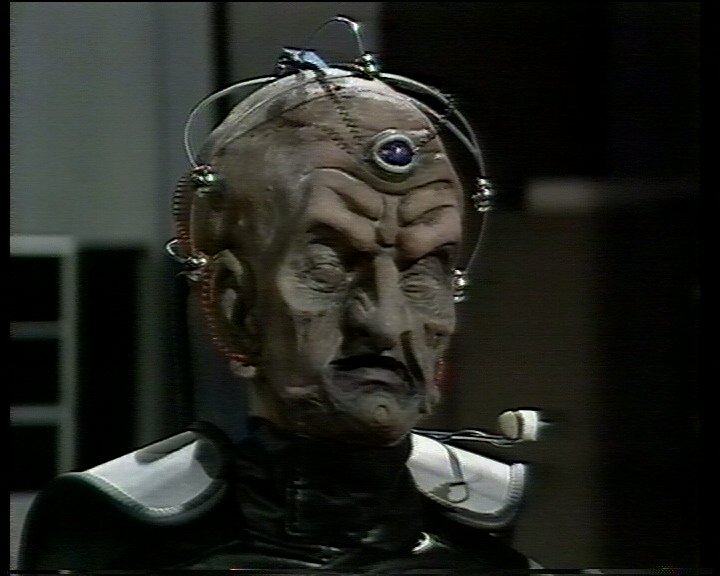
Now that is more like it!
I think that this is a very clean signal considering the tape's age and the colours are still strong. I only wish that I had known about this player (or similar) sooner.
Thanks Lordsmurf for the nod on the JVC Machines.Cole -
That looks much nicer.
All the chroma flaws are gone.
All the grain has been corrected.
Clean video. Want my help? Ask here! (not via PM!)
Want my help? Ask here! (not via PM!)
FAQs: Best Blank Discs • Best TBCs • Best VCRs for capture • Restore VHS -
Looks like the Dr Who series. What were they called, the dielect or something like that.
MAK -
That's Davros, mate! :P
The quality of that JVC looks fantastic, I just wish these machines were available Down Under!?
Good investment, Cole. -
@ racerx
I was thinking Dr. WHO too, yesterday while at work, but I was afraid to
comment on it, case I was wrong. Anyways.
.
.. It was one of my favorite shows back in the mid 90's, when they used
.. to air it on my cable (at the time) and my favor Dr. was the tall one, w/
.. the curly hair, and the young girl - who I thougth was cute.
.
.. when I first saw a this show, I couldn't help but call it crap. It truely
.. was a work of crap. Everything was soo fake, and then some. But. You
.. couldn't help but be drawn to it. show after show, after show after show.
.. I was instantly in love with this show. Then one day, it was taken off
.. the air.
@ cole
Your latest pic is much better. But, I feel that it is so close to your first pic,
but the color is slightly darker (which is what you wanted) and looks good. I
like it.
.
.. I (personaly) would not apply any filters in your editing/encode steps.
.. Not for Dr. WHO. I would encode it at 720 x 480 and highest bitrate you can
.. allow for each of these VHS projects, as they weren't more than an hours long.
.. don't skimp on 352 encode. Give Dr. WHO his respect. (if it is Dr who)
.. but if it ain't dr. who, then it probably could have ben another corney
.. favorite piece of crap I would have loved.
-->
I'm glad things have worked out for you.
Good luck,
-vhelp 3077 -
Thank you for all the encouragement chaps.
Yes the screen shots are indeed from Doctor Who and as NamPla says, it is Davros, the creator of the Daleks.
The story that I took this from is "The Genesis of the Daleks" which was originally transmitted in the UK in 1974. It is a show I really love too and hope that the new series (starting in the UK in March/April) can capture the old magic that so few shows can manage. At least the BBC are throwing some money at it this time.
"Genesis of the Daleks" was 6 x 25 minute episodes which takes it up to 2 hours 20 minutes. To fit that all on one DVD-R I would have to go for (from the Bitrate Calculator) about 4000 kbits. Wouldn't that be a little low for a full 720x576?Originally Posted by vhelp
Having said that, the average Doctor Who stories were four episodes each. 1 hour 40 minutes would be quite easy to fit onto one DVD-R with a fairly hight bitrate.
However, during my search of the forums on "VHS", I saw a few different opinions as to what a good bitrate was for VHS conversions. One example here:
https://www.videohelp.com/forum/viewtopic.php?t=249506&start=0&postdays=0&postorder=asc...=vhs%20bitrate
BTW: if anyone is wondering why convert VHS copies of Doctor Who when the BBC are releasing them on DVD (and I have said ages ago that this would be the only thing I would buy on DVD as well as owning on VHS). Simply that is took the BBC 20 years to release all of the surviving episodes on VHS and they have really only started on DVD.
I was going to suggest ordering it over the internet but it was really hard to find a company that had one on the net. As it was I had to visit about fifteen electrical retailers before I finally found one and not the high street retailers but the independents.Originally Posted by NamPla
It was well worth the search though.Cole -
ok. I factored into the equation, your comment on the up-comming dvds.
First, I didn't know about each show's length, and your goal to fit the
whole seaon (2:40 min) onto one dvd.
.. I'm a fan of CBR and high bitrate. By now, you know this.
One of the reasons why I was suggesting *not* to perform any filtering
is because your VCR is already doing this for you - hardware'wise
And, since the ADVC-50/100/110 does not filter (inside) as most analog
capture cards do, (the ADVC-300 does filter) In fact, it does the same
basic filtering as what most Analog Capture cards; VCRs; (ie, your JVC)
and some DV CAMS (ie, my TRV22 incorporates a filter step) do.
.
.. Only the ADVC-50/100/110 do not filter the captured source.
.
But, I do realize, that your end goal is to fit all onto one DVD, and I
do understand this now.
Second, ..then, if you still want to fit the whole 2:40 min project onto
one DVD, you could try CQ instead, and *keep* the 720 pix ranther than
bumping it down to 352 pix. You could try one of the Amnon82's or kvcd's
CQ tool that does this CQ figuring out thing. - - that's just an option
and a suggestion (all bias 'ness aside) - - I'm no guru of these "assisting
functions", but its worth looking into, if you can afford it. Or..
.
My suggestion (untested) is to use a CQ at MIN: 4000 and MAX: 9000 (or higher)
and set your CQ at a 72 param value, and see if that fits it. You can
vary the MIN if all else fails. (its a learning curve thing) or maybe
you don't have the time or patiance. Anyways.. It probably will, with room
to spare.., but I'm not sure. I'm throwing ideas around.
-->
.. The tricky part when working out CQ, is to make sure that what
.. ever test encode you do, you have to make sure you don't change
.. anything later on, when you found a reasonble final value for CQ.
.. .
.. In past times, I made the discovery that when working out any given
.. pre (calculating and Encoding) "driving values", that later on, if
.. you use them, in your final encode, but change something else in
.. your chaing of events (ie, AVIsynth filters; even colorspace) that
.. you could throw off the final MPEG size.., because *that* value was
.. not included in the pre testing phase(s) of your preliminary measures.
.. .
.. Anyways.
But, if you want close to absolute quality, then I might suggest you
try a 352 pix @ CBR at 6000 bitrate minimum, and see how many of those
episodes you can get on one DVD disk. I realize that it would be better
to get the whole season on one DVD disk, but unless you go the CQ way, then
any other way is not going to get you the end goal, unless you bump the
res down to 352 and use a 2-pass VBR and Bitrate Calculator setup
instead.., which is ok, but you'll just have to wait the x-time, is all.
You see, my idea of quality (w/ respect to VHS) is to duplicate as best
as possible (baring your skills/knowledge level) the VHS source, pixel for
pixel. That's very hard to do, w/out raising the bitrate. But I've
gotten close to this idea by using CQ (on occasion) And, mainly because
CQ is more quality designed in mind, and has a better chance at filling up
a disk w/ reasonable quality, on a per/disk bases.
But, you're main concirn first, is to find out weather or not, this show
was Telecined (24 fps to 29.970 fps NTSC) and if so, you can obtain good
results by using some of the suggestions above.. or whatever your PAL
equivalent is, in IVTC'ing this source.., that is, if its possible.
but first find out what type of source you have.. Film or
Oh, and don't worry about weather or not these are comming out on DVD's.
Because you never know what might not make it onto dvd's. Plus, this is
a fun hobby.
-->
I see you have choosen to revise your avator, with good reason !!
Good luck, so far.
-vhelp 3079 -
Gosh vhelp, it is pretty obvious that I am still just above Noobie as much of what you have kindly explained is something that I have not played around with much yet.
I have mostly used the Jimmalenko's guide on bitrate and screen resolution where he gave me the advice here, using what I can fit on a disc as my guide to bitrate:
https://www.videohelp.com/forum/viewtopic.php?t=245915&start=0&postdays=0&postorder=asc&highlight=
I have tended to use this as a guide, but not as a hard and fast rule. I have only strayed from using CBR in the past when making extended xVCDs (something that I have not done for a while now).
I will admit to wanting to learn to create the best quality as I can, but I am not the sharpest tool in the box so it is a slow process. But at the same time keeping my encoding set up as simple as possible.
But at the same time keeping my encoding set up as simple as possible.
However, there is no doubt that what I am currently producing is better than what I have been doing before and every little tweak that I learn is helping.
Having said all that, I will have a play around with some of your ideas, but the bottom line is that with the JVC VCR I have got, I have already to my mind achieved a large jump in quality and that is another increase to the quality of my DVD-Rs.
I have not used any software filters in the past except for colour correction on old off air VHS, which was giving a rather pale reproduction (far worse than Davros no. 1 above). I did dabble a bit with some of the filters in Virtualdubmod recently on a Spiderman Cartoon VHS, but decided to leave well alone as I found that they weren't really making anything better.
You are right about the fun part though. It sometimes seems more fun making the DVDs, than watching them.
As for the Avatar; well, I just HAD to... Cole
Cole -
Well, as for advice..
If what Jim (above) posted works for you, then by all means, use it.
But, there's nothing wrong with runing experiments, when time allows,
or you want to *push* the envelope a little. Small steps. It takes
time to develop certain instincts. I guess you're on your way
IMO, the CQ mode is more or less, for advanced users.. though anyone
could use it.
As i was saying..
Being that you have an ADVC device (as I do) please observe the folloing
advice, which is based on my current experience.
.
.. and the more I use it, the more I'm convienced, that messing the the
.. color is not the route to take (specially for DV formats because of the
.. "tune" color space it is already pre-advantaged for) And, the ADVC perfect
.. for pretty much everything, even commercial VHS, as long as you have the
.. *right* VCR ( of which I had not factored into the equations until recently,
.. as in your sample pic )
)
.. .
.. My vcr must be missing that filter that your's has, and as such,
.. I was basing my ADVC dumping on commercial VHS sources on this.
.. So, in a sence, I owe the thanks to you. Anyways.
Again, as I was saying..
If you are encoding for TMPGenc, (again) please observe the following
preporation of its encoding your DV source AVI's:
* Options\Environmental setting\..
* [x] Enable reading referrd..
* [ ] Interpolate YUV..
* [ ] Set equation for..
And, as long as your source AVI's are DV related (at least from the ADVC)
you should have no problems with the color space, or color level, for
that matter.
.
When using the above settings, TMPG allows the source to go through,
untouched (other than its internal RGB conversion, should it require it
to be converted (ie, if you open your ADVC's DV source avi directly in
TMPG, vs. frameserving it from say, vdub.., which happens to be in RGB
already)
.
My theory is this, if TMPG senses that the "source" 's color space is RGB
already, it won't require another color space conversion. I'm basing all
this from my encoded outputs thus far.
.
I do tend to play a little though, with the color filter on some of my
dv sources..
.
.. but only because I have a Graphics card that has the capability of
.. outputing video in close to TV mode. When in this mode, (which is [x] Overlay
.. mode ticked inside TMPG) I can see the color space in a totally different
.. perspective, and spot the color changes, even the slightest by one pixel
.. count - something that current Graphics cards of today are not able to provide)
.. I take advantage of this feature in my Graphics card and TMPG. AFAIK, there
.. is no other graphics card and Encoder/App that incorporates such a fine-tune
.. concerto of events of this nature. Its truely a phenomina.., and I know about
.. it. Anyways.
.
So, I can mess around a little with the color filter on some sources.
.
The Graphics card I have is the ATI Rage Fury Pro (AGP) FWIW. It has
the old Theater chip (maybe the first version) inside it.., but not the one's
of today ATI cards, which doesn't seem to have this phenomina I described in
detail, above.
Well, hope I help some more.
-vhelp 3080 -
That is very helpful, vhelp. Encouraged by your suggestions, I am currently doing a comparison of encoded files to my television and will be seeing which versions/resolutions/bitrate are giving the sharpest picture (after all, what we see on our tellys is what matters the most
 ).
).
It will be a while, but I will try and post some results to show what is achieved.Cole
Similar Threads
-
Best quality DVD output software for maintaining photo quality
By P_Erickson in forum Newbie / General discussionsReplies: 20Last Post: 21st Apr 2012, 23:30 -
Sharp VCR (or similar) S-VHS quality for best capture of my VHS tape?
By ruehl84 in forum Capturing and VCRReplies: 0Last Post: 19th Feb 2012, 16:52 -
Output quality
By The Mighty Boosh in forum EditingReplies: 1Last Post: 15th Jun 2009, 21:11 -
Will there be a difference in output quality?
By ingeborgdot in forum EditingReplies: 55Last Post: 21st Sep 2008, 19:41 -
how to get best output quality ?
By korsion in forum Authoring (DVD)Replies: 11Last Post: 25th Jul 2007, 21:41




 Quote
Quote